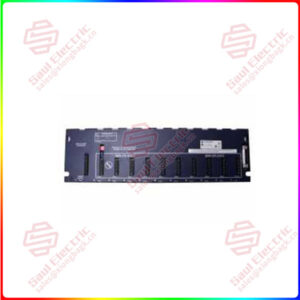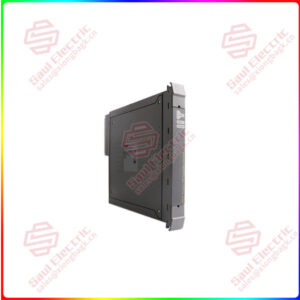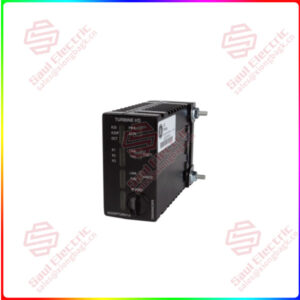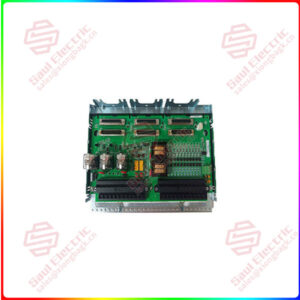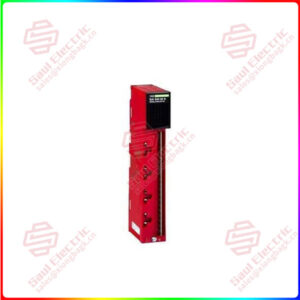Description
Overview
Essential details:IS215UCVEM01A UCVE CONTROLLER MODULE
Part No.: IS215UCVEM01A
Manufacturer: General Electric
Country of Manufacture: United States of America (USA)
Microprocessor: Intel Celeron running at 300MHz
Operating System: QNX
Operating temperature: 0 to 70o C
Storage temperature: -40 to 80o C
Product Type: UCVE controller module
Availability: In Stock
Series: Mark VI
Functional Description
IS215UCVEM01A is a UCVE controller module developed by GE. It is a part of Mark VI series. The controller incorporates a validation mechanism that ensures the coherence and alignment of the toolbox-configured parameters with the existing hardware configuration each time the rack undergoes a power cycle. This validation process serves as a critical checkpoint, guaranteeing that the toolbox settings accurately match the hardware setup and ensuring proper synchronization and functionality of the secondary Ethernet ports upon system power-up.
Features
- Validation Mechanism: The controller incorporates a validation mechanism that verifies the coherence of toolbox-configured parameters with the hardware configuration upon each power cycle. This validation process guarantees accurate synchronization and functionality of secondary Ethernet ports, ensuring system integrity and reliability.
- Secondary Ethernet Ports: The system supports secondary 10BaseT/100BaseTX Ethernet ports, configurable through the toolbox interface within a distinct IP logical subnet.
- Synchronization: Toolbox configurations align with physical hardware, enhancing system reliability and integrating secondary Ethernet ports seamlessly into the designated IP logical subnet.
- Versatile Functionality: Suitable for both simplex and triple modular redundant applications, offering versatile functionality tailored to diverse operational requirements.
- Compatibility: Ordering an exact duplicate of the existing board is recommended to ensure compatibility and operational continuity.
Front Faceplate Details: The front faceplate features three LEDs positioned below the top set screw, serving as valuable status indicators for real-time operational insights.
- Additional Components: Mezzanine card slot, reset button, two Ethernet ports, input ports for mouse or keyboard peripherals, LAN, and SVGA connections enhance functionality and versatility.
- Secure Installation: Set screws at the top and bottom securely lock the module in place and serve as convenient handles for safe removal or handling.
- Comprehensive Design: The controller’s configuration prioritizes user accessibility, system security, and advanced functionality, catering to the demanding environment of turbine control systems.
Memory Configuration
- The memory configuration of this system is thoughtfully designed to meet the demands of advanced computing and ensure efficient data processing. The inclusion of a 32MB Dynamic Random Access Memory (DRAM) provides ample space for storing and quickly accessing data during active processes, contributing to the system’s overall speed and responsiveness.
- Complementing the DRAM, a 16MB Compact Flash Module is integrated into the memory configuration. This component serves as a non-volatile storage solution, capable of retaining data even when the system is powered off. The Compact Flash Module not only supports additional storage capacity but also facilitates quick and reliable data retrieval, enhancing the system’s overall versatility and robustness.
- The presence of a 128KB Level 2 Cache (L2 Cache) further amplifies the memory configuration’s performance capabilities. Acting as a high-speed intermediary between the central processing unit (CPU) and main memory, the L2 Cache significantly reduces data access latency, thereby accelerating the overall processing speed of the system.
- To ensure data integrity and persistent storage of critical information, the memory configuration incorporates SRAM. This type of memory, backed by a battery, retains its content even during power loss. This feature is particularly crucial for preserving essential data and system configurations, safeguarding against unexpected disruptions and ensuring a seamless and reliable user experience.
lf you need to inquire or purchase ,please send the product models to my email or call medirectly .
sunny He
[Email] sales@xiongbagk.cn
[Mobile] 86-18059884797
[WhatsApp] 86-18059884797
[Skype] sales@saulcontrol.com
IS215UCVEM01A UCVE CONTROLLER MODULE
Software and Performance Capabilities
- The controller’s software suite represents a cutting-edge advancement in engineering, featuring specialized applications meticulously tailored for a diverse range of purposes. These applications cater to specific industry needs, including steam, gas, land-marine aeroderivative (LM), and balance of plant (BOP) products. Each software module is intricately designed to optimize performance and functionality within its designated application domain, ensuring a tailored and efficient solution for various operational contexts.
- In addition to its versatile software, the controller boasts remarkable performance capabilities. With the ability to execute a substantial load of up to 100,000 rungs or blocks per second, assuming a standard assortment of average-sized blocks, the controller sets a high standard for processing efficiency. This impressive throughput not only accelerates the execution of complex tasks but also enhances the system’s responsiveness, making it well-suited for applications where real-time processing is crucial.
- The efficiency of the controller is further underscored by its adept handling of diverse and intricate software operations. Whether managing complex steam processes, regulating gas systems, overseeing land-marine aeroderivative operations, or optimizing balance of plant functionalities, the controller’s performance capabilities ensure a seamless and reliable experience across a spectrum of applications. This combination of specialized software and exceptional processing speed positions the controller as a robust and adaptable solution for industries demanding precision, reliability, and versatility in their control systems.
Synchronization and Clock Accuracy
- With the aid of an external clock interrupt feature, the controller achieves synchronization to the clock present on the VCMI communication board within an impressive range of ± 100 microseconds. This synchronization ensures precise timing and coordination essential for various operational processes.
Data Transfer and Communication
- External data transmission occurs between the control system database (CSDB) housed within the controller and external components via the VME bus, facilitated by the VCMI communication board. In a simplex system, this data comprises the exchange of process inputs and outputs routed through the I/O boards. In contrast, within a Triple Modular Redundancy (TMR) system, the data encompasses the combined or voted inputs sourced from input boards, singular inputs from simplex boards, computed outputs intended for voting by the output hardware, and the internal state values necessitating exchange among the controllers.
- This comprehensive data exchange mechanism not only ensures seamless communication between internal and external components but also supports redundancy strategies in TMR configurations, guaranteeing consistent and reliable operation within complex control systems.
Ethernet Modbus Features
- Standard Slave Interface: It offers native support for Ethernet Modbus, serving as a standard slave interface. This enables effortless integration with existing control systems, PLCs, and HMIs, streamlining data exchange and interoperability.
- High-Speed Communication via Ethernet: Ethernet serves as the backbone for high-speed communication within the control system. Leveraging Ethernet connectivity, the Mark VI controller ensures efficient data transfer and real-time interaction between different components.
- TCP/IP Stream Sockets: The Ethernet Modbus protocol operates atop the TCP/IP stream sockets, providing a reliable and standardized communication framework. This layered approach ensures robust communication while adhering to industry standards.
- Interface Functionality: The primary objective of the Ethernet Modbus interface is to enable third-party Modbus master devices to access and manipulate signals within the Mark VI controller. Utilizing a subset of Modbus function codes, external devices can seamlessly read and write data stored within the controller.
- Universal Response Capability: Capable of responding to Ethernet Modbus commands received from any Ethernet port supported by its hardware configuration. This universal response capability ensures flexibility and interoperability across diverse networking setups.
- Configuration Flexibility: Ethernet Modbus can be configured either as an independent interface or in conjunction with a serial Modbus interface. This flexibility allows users to tailor the communication setup according to their specific application requirements and networking preferences.


 1 Year Warranty
1 Year Warranty

